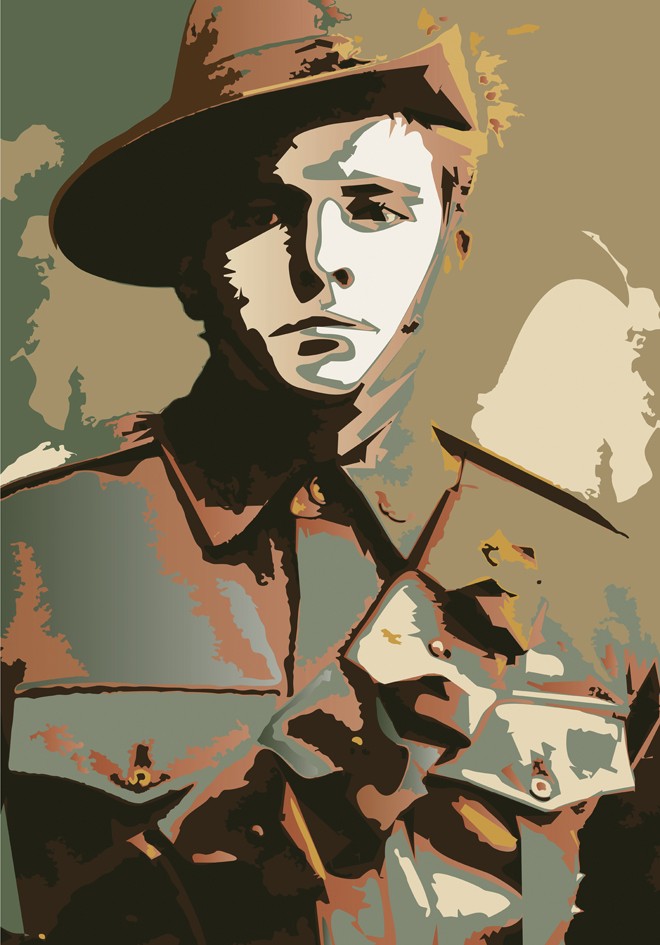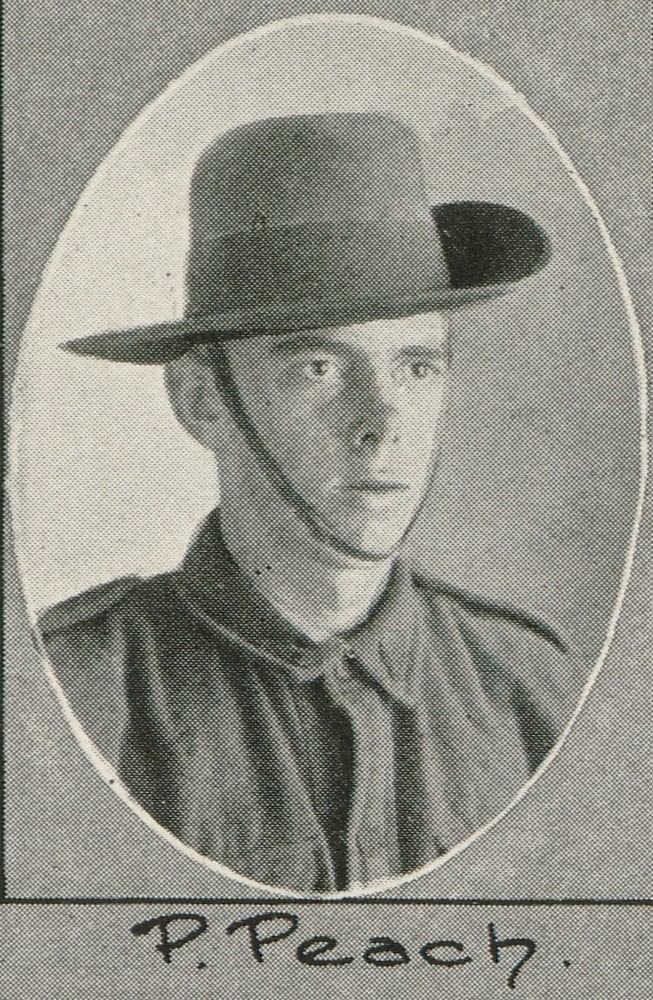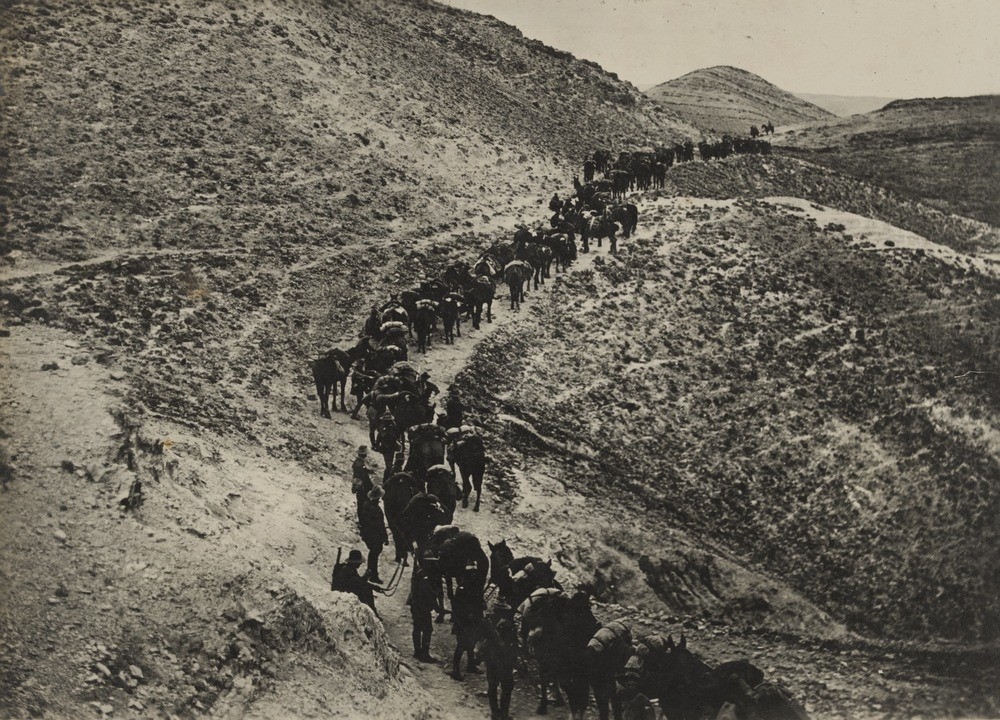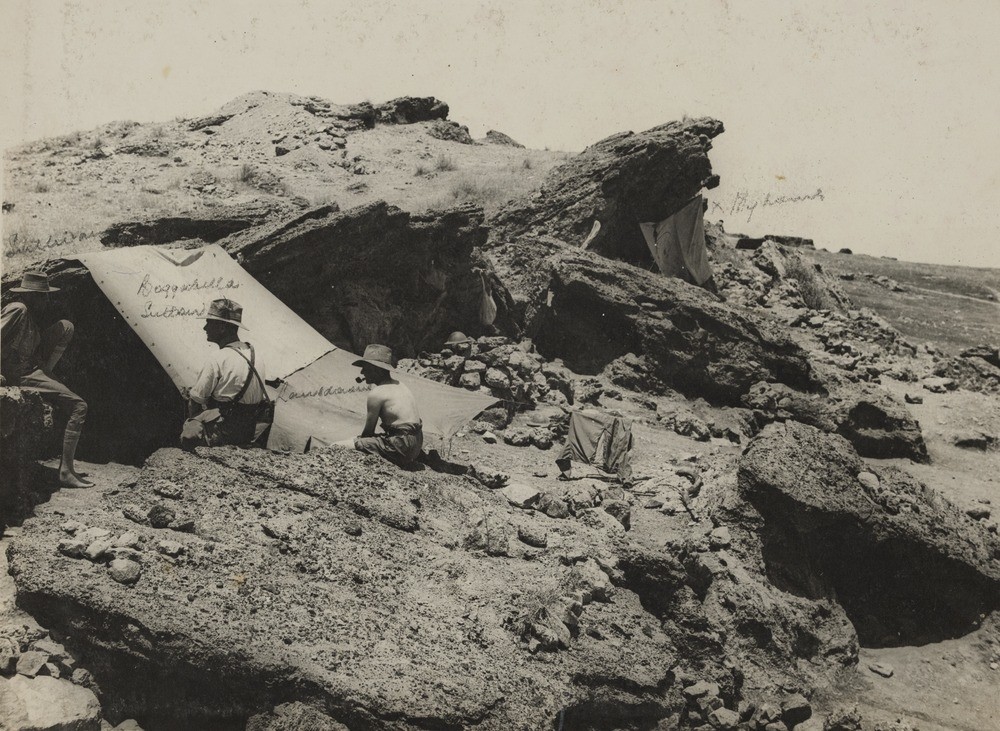Trooper William James Peach: 2nd Light Horse Regiment
By JOL Admin | 9 December 2015
Guest blogger: Lockyer Valley Regional Council.
Displayed in the ‘Walk of Fame’ inside the Lockyer Valley Cultural Centre, Gatton, are ten photographic portraits of Lockyer Valley locals who fought in the First World War. The portraits formed a component of the recent Queensland Government-sponsored exhibition ‘Queensland Transport Museum Salutes 100 Years of ANZAC’, which was on display in the adjacent Queensland Transport Museum from 11 April to 30 June 2015, and featured First World War motorised and horse drawn machinery.
This post is the sixth in a series which will feature the ten Lockyer locals whose portraits and biographies are in the ‘Walk of Fame’. Where possible, we will supplement their stories with some images from the State Library of Queensland or Australian War Memorial collections. We acknowledge the Lockyer Valley Regional Council, Derek Barry and Russell Tattam for allowing us to share their content, which can also be found on the Lockyer Valley Libraries catalogue and Flickr.

William James Peach : saluting 100 years of ANZAC history. Lockyer Valley Regional Council BRN: 106072
William James Peach was born in 1899, the eldest son of Elizabeth and William Peach. Elizabeth was the daughter of Fleurine Andrews who lost three sons in the war.
William was 18 ½ years old when he enlisted at Ipswich on October 19, 1917. He was posted to the 30th Reinforcement of the 2nd Light Horse Regiment (service number 3491). Trooper Peach embarked for the Middle East from Sydney on the SS Ulysses on December 19, 1917 and arrived at Suez on January 16, 1918. He was sent to a training camp at Moascar on January 17 and on May 11 transferred as a reinforcement to the 2nd Light Horse Regiment, which was camped in the hills between Jericho and Jerusalem.
On May 16 the regiment moved to Solomon’s Pools (between Hebron and Bethlehem) where apart from training and lectures they visited holy sites in the area. On June 6 the 1st Brigade, consisting of the 1st, 2nd and 3rd regiments, returned to the Jordan Valley where temperatures reach 128F at 1200 feet below sea level. The brigade took over the Auja sector from the 4th Brigade. The sector included Musallabah Salient, destined to be the scene of a critical engagement. The regiment was shelled daily by the Turks with their 4.2 and 5.9 inch Howitzers. By June 30 malaria had reduced the regiment to 230 rifles.
On July 4 and 6 enemy raiding parties attacked the Light Horse men, and from July 7 between 200 and 300 artillery shells fell daily. On July 13, large bodies of Turkish infantry massed, attacking in the early hours of the 14th. Against overwhelming odds the Light Horse men drove back the Turks inflicting many casualties. Many men of the 1st brigade were either killed or wounded.
Late in July, William’s mother Elizabeth was reading a newspaper as she lay in hospital, having given birth to her ninth child. The paper had part of a page missing, and she was told the family dog had bitten off the page. But the grim news from the torn page could not be hidden for long: her eldest boy William had died in action on July 14, 1918. He was buried at Musallabah near Jericho in Palestine but has no known grave. His name is commemorated on the Jerusalem Memorial to the Missing. Elizabeth named her newborn William James in his honour. Bill Peach, who lived all his life in what was Gatton Shire, died in February 2009.
William’s uncle David Peach and cousin Percy were also killed in the Great War. The first Peach to sign up was Percy who was 18 years and nine months old when he enlisted at Brisbane on October 8, 1915. He left Brisbane for the Middle East with the 14th Reinforcements, 9th Battalion on January 31, 1916, and disembarked at Alexandria on March 5, 1916. He joined the 47th Battalion at Tel-El-Kebir, Egypt on April 28, 1916 before moving to France on June 2, 1916. Wounded in action on August 8, 1916 he returned to his unit on December 20, 1916. He was promoted to Lance-Corporal on June 27, 1917 and was killed in France on April 3, 1918. He is commemorated on the Villers-Bretonneux Memorial.

Percy Peach in The Queenslander Pictorial Supplement, 1916
David Peach was 25 years old when he enlisted in Brisbane on October 22, 1916. He left for England with the 24th Reinforcements, 9th Battalion on January 24, 1917. After training with the 3rd Training Battalion he was posted to the 9th Battalion in France on November 9, 1917. He was killed on April 26, 1918, one day after the Australians had freed Villers-Bretonneux for the second time in one of the most significant battles of the war. He is commemorated on the Villers-Bretonneux Memorial. The Villers-Bretonneux school was built with donations from Australian schoolchildren and above the blackboard in each classroom are the words ‘N’oublions jamais l’Australie’ (‘Never forget Australia’).
Comments
Your email address will not be published.
We welcome relevant, respectful comments.





